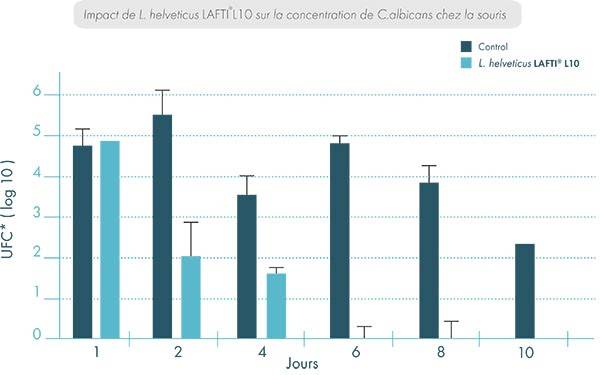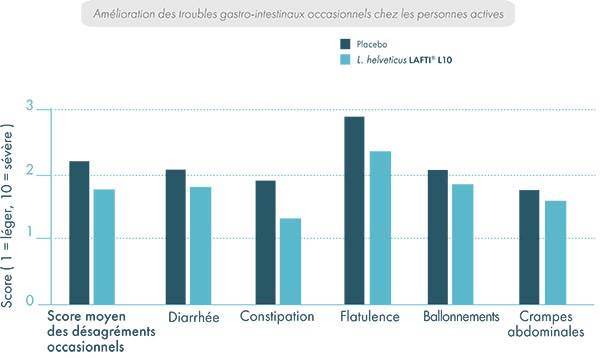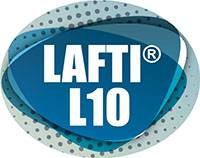
LACTOBACILLUS HELVETICUS LAFTI® L10 : EIN MIKROBIOTA-STAMM MIT NACHGEWIESENER WIRKUNG AUF DAS DARMWOHLBEFINDEN UND GEGEN CANDIDOSE.
Lactobacillus helveticus, ein isoliertes stäbchenförmiges Gram+-Bakterium, ist ein Milchsäurebakterium, das häufig bei der Herstellung von fermentierten Milchprodukten verwendet wird. Es kommt insbesondere im Schweizer Emmentaler vor, daher sein lateinischer Name "helveticus". Neben der interessanten Verwendung bei der Herstellung bestimmter Käsesorten haben bestimmte Stämme von L. helveticus auch positive Eigenschaften für die Darmgesundheit(1) und bei Candidose(2).
(2).
Der eingetragene Stamm L. helveticus LAFTI® L10 ist resistent gegen Magensäure und Galle(3) und haftet stark am Darmepithel(4), was ihn zu einem bevorzugten Stamm für die Verbesserung des Darmkomforts und die Bekämpfung von Candidose macht.
In-vivo-Modelle im gastrointestinalen Bereich haben gezeigt, dass L. helveticus LAFTI® L10 in der Lage ist, :
- Die natürlichen Abwehrkräfte zu unterstützen, indem er mit Krankheitserregern wie Listeria monocytogenes, E. coli und Candida albicans in Konkurrenz tritt(5).
- Synergistisch mit präbiotischen Ballaststoffen wirken: FOS und Inulin(6)
- Modulation der proinflammatorischen Reaktion: Verringerung der Aktivität der kolikalen Myeloperoxidase (MPO), Verringerung der Produktion des Entzündungsmediators LTB4, Erhöhung des Glutathionspiegels und Unterstützung des antioxidativen Stoffwechsels(3).
Laut einer klinischen Studie an 60 Erwachsenen reduziert L. helveticus LAFTI® L10 gelegentliche gastrointestinale Beschwerden signifikant(7).

Darüber hinaus zeigte eine mechanistische Studie, dass L. helveticus LAFTI® L10 die Besiedelung mit C. albicans, dem Hauptpathogen, das für die vaginale Bakteriose verantwortlich ist, verhindert(2).


*FCU: Implementierte Kolonie-Format-Einheiten.
(1) Taverniti V., Guglielmetti S. (2012) Health-Promoting Properties of Lactobacillus helveticus. Frontiers in Microbiology. (3):392
(2) Elahi, S., G. Pang, R. Ashman, et R. Clancy. « Enhanced Clearance of Candida Albicans from the Oral Cavities of Mice Following Oral Administration of Lactobacillus Acidophilus ». Clinical & Experimental Immunology 141, no 1 (2005): 29 36. https://doi.org/10.1111/j.1365-2249.2005.02811.x.
(3) Welin A. et al.(2005).“Survival of L. acidophilus and L. casei in the human GI tract perceived effects on health” Nutrafoods (4): 2-3.Pang, G. (2005). A comparative study of probiotic bacterial strains in vitro and in vivo.
(4) Lallemand internal report
(5) Mahoney, M. and A. Henriksson (2003). “The effect of processed meat and meat starter cultures on gastrointestinal colonization and virulence of Listeria monocytogenes in mice.” Int J Food Microbiol 84(3): 255-261.
(6) Su, P., et al. (2007).”Selected prebiotics support the growth of probiotic monoculturesin vitro.” Anaerobe 13(3-4): 134-139 Peran, L., et al. (2007). “A comparative study of the preventative effects exerted by three probiotics, Bifdobacterium lactis, a.Lactobacillus casei and Lactobacillus acidophilus, in the TNBS model of rat colitis.” J Appl Microbiol 103(4): 836-844
(7) Paturi, G., et al. (2007). “Immune enhancing effects of Lactobacillus acidophilus LAFTI® L10 and Lactobacillus paracasei LAFTI® L26 in mice.” Int J Food Microbiol 115(1): 115-118










